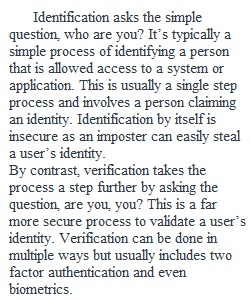


Q 1. Log into vCloud using the same credentials as used for Web Campus 2. Log on each of your VMs using the user name CNSLAB\administrator using the password ‘Pa$$word’ This lab will focus on how to securely use the Cloud for File Storage. • While nearly all Cloud Service use HTTPS for login, some now have 2-factor authentication available for encryption in transit • Most don't encrypt files in storage (or keep a copy of the keys) • See this article (Links to an external site.) for more information Boxcryptor is one of the easiest and includes free ways to encrypt your files before saving in your Cloud Service Provider. Here is link (Links to an external site.)to Boxcryptor's web site Explore it and write summary of what you find out • Check this out by trying it on your classroom computer and/or mobile device • Compare the free personal version with pay-for versions • What type of encryption is used • What Cloud Services are supported • Explain how secure file sharing is done • Share a file with your instructor using BoxCryptor For the Week 6 Lab, when you are ready to share a file with your instructor, the easiest way is to use Whisply. This works great for one time or occasionally sharing an encrypted file with anyone. Check out how to do it here: Boxcryptor and Whisply – Guide for Windows.pdf Download Boxcryptor and Whisply – Guide for Windows.pdf Respond to Part 2 on the Lab Report Assignment • Compare and contrast identification and verification • Describe web security threats, consequences, and potential countermeasures Attachments • Weekly Lab Report Download Weekly Lab Report Rubric SEC 310 Lab Report Rubric SEC 310 Lab Report Rubric Criteria Ratings Pts This criterion is linked to a Learning OutcomeQuality of Information 40 pts Excellent Information clearly relates to the main topic. It includes several supporting details and/or examples 37 pts Proficient Information clearly relates to the main topic. It provides 1-2 supporting details and/or examples 34 pts Competent Information clearly relates to the main topic. No detail and/or examples are given 30 pts Failing Information has little or nothing to do with the main topic 40 pts This criterion is linked to a Learning OutcomeProcess and lessons 40 pts Excellent Substantially describes the process taken to complete the assignment, problems encountered and lessons learned 37 pts Proficient Minimally describes the process taken to complete the assignment, problems encountered and lessons learned 34 pts Competent Describes just the process taken to complete the assignment but does not include lessons learned 30 pts Failing Describes only the lessons learned with little or no relationship to the main topic 40 pts This criterion is linked to a Learning OutcomeMechanics 10 pts Excellent No grammatical, spelling, or punctuation errors 8 pts Proficient Almost no grammatical, spelling, or punctuation errors 6 pts Competent Few grammatical, spelling or punctuation errors 2 pts Failing Many grammatical, spelling or punctuation errors 10 pts This criterion is linked to a Learning OutcomeMeets Deadline 10 pts Excellent Assignment report is posted on Sunday 8 pts Proficient Assignment report is posted one day late 6 pts Competent Assignment report is posted two days late 2 pts Failing Assignment report is posted three days late 10 pts Total Points: 100 PreviousNext
View Related Questions